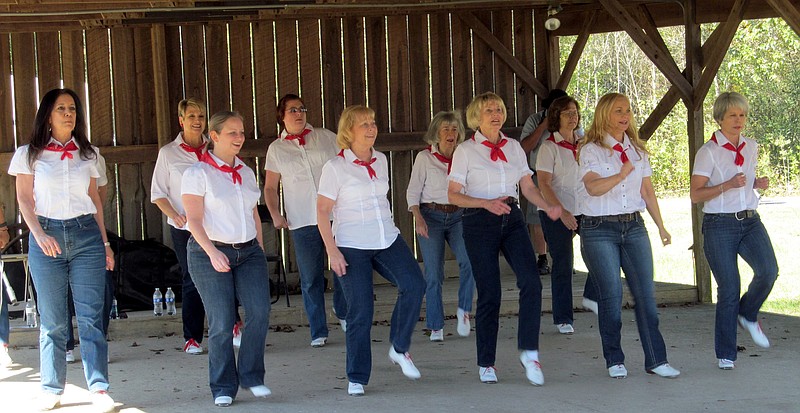It's football time in Tennessee, which means it's also time for fall festivals and all the folksy fun they entail: craft vendors, funnel cakes, deep-fried Oreos - and clogging performances.
Hilda Griffin is the instructor of the East Ridge Cloggers, a group of about 20 men and women who perform at local festivals such as Prater's Mill and Ketner's Mill, as well as area nursing homes and assisted living facilities. They also attend clogging workshops and the national convention if held closeby, like last year's in Nashville, where they learn new routines from prominent instructors from around the country.
Griffin says clogging is a combination of dance styles brought to America by African, German, Irish and English settlers. Once here - many settling in Appalachia - they picked up aspects of one another's dancing, fusing it into the style we know today. A rhythmic dance style, with performers typically using their heel to mark the beat, clogging differs from its cousin, tap dance, in that cloggers use double taps on the heel and toe, as opposed to just the heel.
Traditionally, cloggers dance to old-time Appalachian music played on a fiddle and banjo, but Griffin says it can be done to any kind of music that's got a beat. Meghan Trainor's "Your Lips are Movin" is among her favorite clogging tunes. "It's a good, fast routine," says Griffin, who comes up with some of the East Ridge Cloggers' routines, while others are modeled on those they've seen at workshops or online.
Born and raised in Chattanooga, Griffin started clogging 30 years ago when she moved for a decade to Toledo, Ohio, where she says clogging is a more popular pastime than it is here, though she's unsure why. It was there she saw her first group of cloggers performing, somewhat ironically, to "Rocky Top."
"I thought, 'I have to learn to do that,'" Griffin says. Previously fond of square dancing, she promptly took to clogging and joined an Ohio group for the next 10 years.
After moving back to the Scenic City, Griffin became the East Ridge group's instructor in 1998, when it was based in Brainerd at Allemande Hall. The group was started there in the early '70s, and many members have been with the group since before Griffin began leading it, including an 82-year-old man. He is one of only four men in the group.
"We're a good, fun group," Griffin says, adding that unlike some clogging groups, the East Ridge Cloggers don't compete. She has never competed - "competition means travel, and a lot of money," she says - but she's been a spectator at competitions and finds them fabulous. "It's different from what we do," she says, describing competitive clogging as precision dancing along the lines of cheerleading, typically done by dancers younger than most of the East Ridge Cloggers.
While her group's average age is 50, there's definitely an interest in clogging among the younger generations, Griffin says. She teaches a 10-week beginner class each spring in which the majority of students are in their 20s. Griffin has also had children in her class, though they don't tend to dance with the group due to time constraints, she says.
IF YOU GO
To see Griffin's cloggers in action, visit the Ketner's Mill Country Arts Fair in Whitwell Oct. 22, or the Prater's Mill Country Fair in Dalton Oct. 14-15. Find out more about the East Ridge Cloggers, who meet every Wednesday and Thursday at the East Ridge Community Center, at eastridgecloggers.com.
